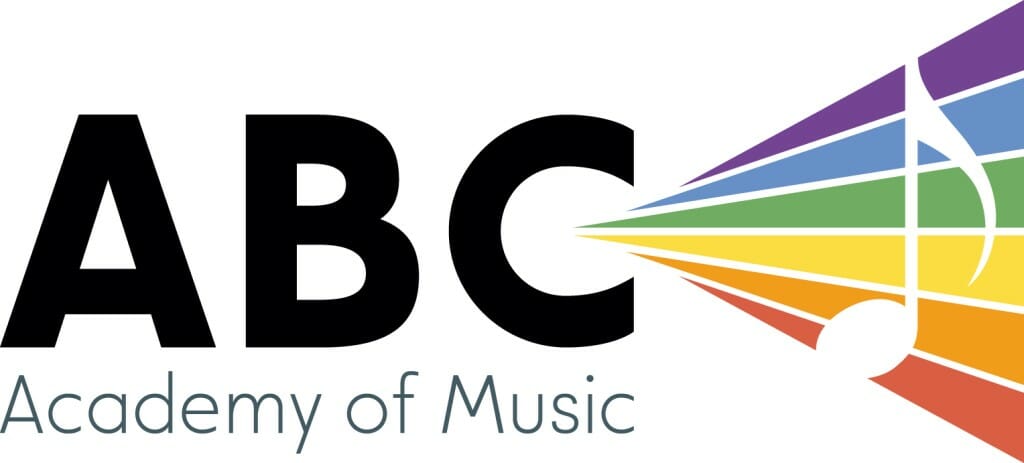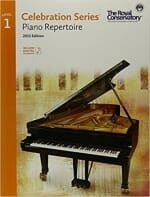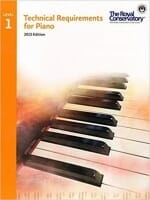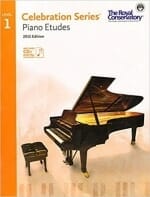Mezzo-Soprano Emma Berube (she/her) showcases a range of repertoire in art song, opera, and music theatre. From Bach to Debussy and Sondheim to Schwartz, she has an appreciation and expertise for a wide range of music that tells a story.
Emma achieved her Bachelor of Music from the Don Wright Faculty of Music at Western University in 2023. During her time at Western she was involved in several theatrical, music theatre, and choral productions. Emma’s goal during her time at ABC is to connect with students through music and help them become proficient and confident musicians and humans.
Get to know Emma…Beyond the Bio!
Hobbies: Reading, Writing, Spending time with friends and family
Musical Influences: Stephen Sondheim, Jason Robert Brown, Taylor Swift
Favourite Food: Strawberries
Least Favourite Food: Olives
Favourite Song: Evermore – Taylor Swift
Favourite Movie: Little Women – Greta Gerwig
Favourite Movie Music: Peter Pan – James Newton Howard
Favourite Musical Theatre/Opera: Company – Stephen Sondheim
Best Quote from your Teacher: “Run as Fast as You Can”
Favourite Book: The Secret to Superhuman Strength – Alison Bechdel
Latest Homework from Emma
Is Emma Your Teacher?
Sign up now to get your weekly assignments delivered, and never lose your homework sheet again!
Assignments from April 10th
Hello!
Great work in class this week all around!
Noreet
Today we reviewed the 4/4 and 3/4 time signatures as well as practiced lining up the Macro and Micro beats within a song. Please have Noreet practice Mr. Haydn’s theme with the metronome set to 85BPM (beats per minute). We reviewed this piece in class together, if she gets stuck please help remind her that the song starts on a D in G major and will modulate into C Major at the end of the first phrase. Encourage her to practice the song as if she is performing it. Noreet can also continue to practice Daydream hands separate. We read the whole piece together in class, encourage her to focus on the fingerings for this piece to ensure her fingers don’t get tangled.
Vida
Today we worked on Homeward Bound and Under the Sea! At home, please help Vida to sight read the second page of Under the Sea. While practicing Under the Sea, help Vida to identify and write in any large intervals she finds tricky. Continue to practice Homeward Bound at home, paying close attention to the indicated phrases in the piece. Encourage Vida to play the whole phrase (as indicated by the legato line) connected and smooth before moving onto the next phrase of the song. I have also uploaded a phrases worksheet for Vida to fill in at home.
Eva
We started a new song this week! Please help Eva to practice the first phrase of this song. She can identify all of the notes in the first phrase, should she get stuck when rereading the music, ask her if the next note moves up or down from the last note and by how many steps. Eva also likes to take turns when practicing, feel free to show her how to play a specific bar within the first phrase and ask her to copy it. Eva can also continue to write songs at home using the note values we have studied in class (whole note, dotted half note, half note, quarter note, eighth note). Please help Eva when writing these to ensure the bars are “balanced”. Choose to write the song in either 4/4 or 3/4 time and help Eva to make sure her chosen note values add up to 3 or 4 (depending on which time signature she chooses). Then encourage Eva to play the song on the keyboard.
Thank you everyone! See you all next week!
Assignments from March 27th
Hello Everyone!
Great work this week all around!
Noreet:
Noreet informed me that she will be away on vacation for a few weeks in April and May, thats so exciting! Please make sure to cancel any lessons scheduled during that time to ensure you are not billed for these lessons. You should be able to do this yourself through Opus, but if you have difficulty please confirm the Thursdays you will be away, and I would be happy to assist in the cancellation process.
For this week Noreet can warm up with the E Major and B Major scales hands together in two octaves. She can also practice the F Major scale hands separately, one octave. Remember, F Major has 1 flat; B flat. Please continue to practice Mr. Haydn’s theme. We reviewed the first phrase in class together. Noreet is to sight read the second phrase on her own. Please remind her that the first note of the second phrase is C, she can find her way from there by asking herself if the next note is higher or lower than the one she just played, and by how many steps. Noreet can also practice “Daydream” hands separately. We will review this in class next week.
Vida:
Please continue to practice Theme and Variation and Home on the Range. Pay close attention to the eight notes in Theme and Variation. Encourage Vida to count these out loud (1 and 2 and 3 and 4 and) like we do in class to ensure all eighth notes are equal in length. Focus on the transitions between phrases in Home on the Range. Encourage her to play this slowly. I have also uploaded a work sheet to reinforce some of the concepts we talked about in class together. Please help Vida fill this out, it asks her to label both the Macro beat and the Micro beat of the phrase provided; see the example for clarification. The second phrase is a fill in the blank for note values. The phrase is in 4/4 so each bar has to add up to 4. Bring this with you next week and we can correct it together. You can find the worksheet here!
Eva:
Please continue to practice Little River. Eva might need help with the second phrase as we haven’t seen many notes written in the bass clef, but it is all stepwise motion. Eva can also continue to make up songs with the note value cards I’ve uploaded to the google drive. Start by asking her if she wants to write the song in 4/4 or 3/4, then work together to choose notes that fit the time signature. Each bar should add up to either 3 or 4 depending on which time signature Eva chooses. Encourage her to play these for you when finished and to count out loud when doing so. You can find the note value flash cards here!
Thank you everyone!
Looking forward to more great lessons in April!
Assignments from March 20th
Hello Everyone!
I hope you all enjoyed your March Break!
Noreet:
Today we sight-read Mr. Haydn’s Theme and reviewed the meaning of transposition and modulation; when the song starts in one key and ends in a different one. Noreet can continue to practice the right and left hands of Mr. Haydn’s theme separately until she feels confident to try playing hands together. Noreet is able to find the first note of the song, if she forgets, please remind her that the ledger line in the middle of the staff is always middle C. Noreet can also feel free to go back through her book and review previous songs we have studied together. This is in anticipation of an upcoming student recital – I will have more information about this in April.
Vida:
Vida can continue to practice “Green Frog Hop” and “Theme and Variation”. Play with tempo this week; “Green Frog” can be played quickly while “Theme and Variation” should be played at a moderate tempo. “Green Frog Hop” is to be played no faster than 185BPM, this is fast enough for Vida’s liking but not too fast that we miss out on the melody. “Theme and Variation” is to be played at 120BPM on the metronome. Have her play along with the metronome at least once to internalize each tempo. Pay close attention to the running eight note figure in the Variation, please help Vida to ensure all eight notes are played evenly, that none of them “stick”, and that the phrase is played smoothly throughout. Record this one when Vida is ready so that she can hear the melody of the song – if the melody is unclear have her play it slower. Finally, help Vida practice her sight-reading with “Under the Sea”.
Eva:
I’m sorry we missed you today. Eva can continue to practice different rhythm patterns on the piano. She can also write her own rhythm pattern if she would like. Please help her to write these out if she wishes and ensure she uses the correct names for each note. See the flashcards in Eva’s google drive folder to help this process.
Christian:
For this week, warm up with the “French Minuet”. Play this entirely with one hand (even the one bar indicated for the left hand). You can alternate playing this with the right and left hand. Play it as quickly as you are comfortable with, being mindful of your fingerings so your fingers do not get tangled up when ascending or descending. Continue to practice the chord progression for “How Long Will I Love You”. Use the bottom note of each chord to map out where your fingers land for each chord – this will help with faster transitions between chords. When confident playing the pattern of the chord progression, try adding in the roll. Review the first two phrases of the right hand, watching out for where the melody is in stepwise motion or leaping intervals. You can also read more of the piece to challenge your sight-reading.
Happy practicing everyone!
Assignments from March 6th
Hello Everybody!
Just to confirm, we do not have lessons this week, March 13th. Please enjoy your March break!
Noreet:
Sorry we missed you this week! Please continue to read and practice Mr. Hayden’s theme and we will see you after the March break.
Vida:
I have uploaded both a recording of Green Frog Hop and the sheet music for “Under the Sea” to the google drive. When practicing Green Frog Hop, have Vida record the song and listen back. Work towards playing the whole song start to finish with no pauses. Have Vida practice playing the last bar of one phrase and the first bar of the next phrase back to back to smooth the transitions from phrase to phrase. She can listen to the recording I’ve uploaded for reference, you might have to download it off the drive. If she wants to play it faster, thats fine. Sight read “Under the Sea” we will review this in class after March Break. Please find both the recording and sheet music here and here.
Eva:
For warm up, help Eva practice some of the rhythm patterns I’ve uploaded to the google drive. She can either clap these or play them on a piano key. Please help Eva sight read “Little River” from Piano Adventures Level 1. This song is all step-wise motion, but please help Eva with the bass line specifically as we haven’t worked with these notes as much. The goal is to play this song smoothly so that there is no break or pause in the sound and for all notes to be held for their written length. Eva can practice this by walking her fingers up and down the keyboard. You can find both the rhythm patterns and “Little River”here.
Christian:
Feel free to record yourself playing both “A Little Night Music” and “Sailor’s Song” so you can hear how you play the song. The goal is to play them both as if performing them. Play both songs start to finish in one take each, then play the recordings back listening for areas of the song you feel good about and areas that still need more work. Go back and practice the areas that still need work. For “How Long Will I Love You”, practice the chord progression in the first 4 bars, playing the chords both “solid” and “rolled”. Also, sight-read as much of the right hand as you can, we will review any mistakes next week.
Happy March Break Everyone!
I will see you in lessons on March 20th. Happy practicing!
Assignments from February 27th
Hello Everyone!
Wow some awesome progress this week!!
Noreet:
Today we reviewed the D Major and A Major scales hands together. Noreet can continue to warm up with these, however please pay extra close attention to the descent of these two scales and review the fingerings slowly to ensure Noreet’s fingers don’t get tangled. Practice the descending pattern, hands separately, 3 times each, increasing the speed of the tempo each time. Then play the scales descending hands together. Noreet can also practice E Major hands separately slowly. Noreet would like to continue to review “More Ice Cream” this week. Please help her and remind her that this song starts on a D. Noreet can also slowly start to practice Mr. Hayden’s Theme. She will have to sight read this herself. Should she get stuck, or not recognize a note, help her find the answer by asking if the next note is higher or lower than the one she just played and by how many steps.
Vida:
We are working on Green Frog Hop! Remember that this piece has both an F sharp and an F natural in it and sometimes alternates between these two in the same bar. Please remind Vida the difference between the two and help her to identify both on the page and keyboard. Also, a correction from the lesson…The small triangle symbol in the piece is NOT a marcato as I called it in the lesson, it is an accent. But they mean very similar things – make sure Vida emphasizes the accented notes and phrases by pressing the keys firmly. Finally, please help Vida to sight read the second page of Green Frog Hop as we did not get to that in the lesson. When practicing this piece, please dedicate more tome to reading and practicing the left hand to help Vida become more familiar with the notes in the bass clef. Start with the left hand, then read the right hand, play both together when Vida is confident. Feel free to record Vida playing this one when she is “performance ready”, it sounds like this was helpful last week.
Eva:
Great first virtual lesson today! We started to read through “Piano Adventures Level One” today! You can find this book available on amazon here. Today we looked at page 4 in the book “Get Ready for Take Off”. A copy of this has been uploaded to the google drive. We reviewed our note values with flashcards, talked about time signatures, reviewed our dynamic levels, and played through some rhythm patterns! For this week, I have uploaded both the note values flashcards and 9 different rhythm patterns for Eva to review. With the rhythm patterns, Eva can feel free to clap these rhythms or play them on the piano. When playing these rhythms, please ask Eva to count out loud to ensure she is holding each note for the correct amount of time. Should Eva get stuck, or is unsure of how a rhythm pattern is supposed to sound like, use the Note Values Flashcards to help remind her how many beats each note gets. You can find the flashcards here.
Awesome work this week! I’m so excited to see how much we all accomplish in March!
Happy Practicing!
Assignments from February 20th
Hello Everyone!
Such fun classes today!
Vida:
Great work this week! Continue to warm up with the F Major scale, hands together. Continue to work on Rhino in the Mud. Don’t forget the D in the right hand of measure 8, and review measure 9-11 (this phrase starts on a G!) You can feel free to record this song for Vida to hear! Ask her to play it as if she is “performing it” (playing start to finish smoothly, and as accurately as possible). When listening back, have Vida follow along by pointing to the notes she hears with a pencil. Take turns pointing so that Vida can read and listen at the same time.
Eva:
Great to see you this week! Please continue to help Eva read “Dancing with Frankenstein”. She knows the first phrase, we read this together in class. If she gets stuck and doesn’t remember the notes, I’ve uploaded flashcards of all the notes in the song for review. I’ve also uploaded a work sheet for Eva. The sheet asks her to write in the names of the notes, write the correct note on the staff, and to colour the notes she sees with matching colours. She can also practice “Jingle Bells” as she requested this song in class. Please help her to read this when practicing, she knows most of the notes, but some of them are new (D, F, and A). If she gets stuck, ask her if the next note is higher or lower than the one she just played and by how many steps on the “ladder”. You can find the worksheet and flashcards here.
Christin:
Great class today! Continue to warm up with the C and G Major scales. When practicing “A Little Night Music”, remember to look for the shape of the phrase to help with sight-reading. I’ve uploaded a recording of myself playing so you can hear the “finished product”. Try not to rely on the recording and remember to read the notes rather than listen for them. If you feel up for the challenge, try to sight read “Sailor’s Tall Tale” that I’ve uploaded to the drive. You can also start to work on “How Long Will I Love You”! Specifically work on playing the C Major (1st inversion) and G Major chords both solid and “rolled” and practice the eighth note melody in measure 9. Feel free to sight read as much as you can between now and our next class, we can correct any errors then. You can find the materials you need to practice here!
Thanks everyone for great classes this week! Happy practicing!
Assignments from April 12th
Hello Berke!
Great progress today!
At home, please continue to practice Mozart’s Minuet in F. Play thought the whole song once or twice in both hands while focusing on the rhythm and timing of the music before going back and playing the song hands separate. When playing the song separate, focus on the musicality of the piece. The goal is to play both phrases smoothly. Play around with it, feel free to play louder or softer, pressing harder or gently on the keys. If you can, record yourself playing the song so that you can listen back, then decide if you want to play certain bars a specific way (louder, softer, faster, slower etc.). We will review this and talk more about musicality next week. On your own, please try to sight read the next 4 bars of Moonlight Sonata; build the chords slowly from the bottom up, make note of anything you are unsure of and we will correct any mistakes next week. Finally, please fill in the chord worksheet I gave you at the end of class. Using the two examples above (C and D Major) determine which chords in G major are Major and which are Minor. Remember to make note of any sharps in G major. Then, using the sheet you filled in, play through all if the chords in G Major.
Happy practicing!
Assignments from March 29th
Hello!
Great work this week!
Berke:
For Mozart’s Minuet in F, please ensure Berke labels the Macro beat for the bars he finds difficult to play hands together. We did an example of this in class today. I’ve uploaded a new piece, Ecossaise in E flat Major by Beethoven, for Berke to sight read at home, please have him read the right and left hands separately. For Moonlight Sonata, this week please review the first 4 bars of the song as we made some corrections to the chords in measure 3. Please encourage Berke to play this slowly to ensure he has time to play the correct notes. Measure 4 is to be played VERY slowly as this bar has 4 different chords played in a row. Encourage Berke to practicing building these chords slowly so that his fingers get used to playing the different keys in each chord. Once Berke is familiar and comfortable with the notes in each chord he can slowly speed up the tempo. If he feels confident Berke can also sight read the next 4 bars and we can correct them in class if need be. The new Beethoven piece can be found here!
Happy Practicing!
Looking forward to more great work in April.
Assignments from March 22nd
Hello!
I hope you all had a good March Break!
Berke:
For this week, please have Berke warm up with Mozart’s minuet in F so that he can continue to practice playing hands together. Remind him that there is an octave jump in the left hand in measure 3. Please ask Berke to play the full 8 bars as smoothly and as accurately as possible without stopping. Challenge him to resist going back in the music to correct any mistakes; play each bar once and move on to the next bar – even if its not perfect. Play the piece this way 3-5 times then put it away. Today we started learning Beethoven’s Moonlight Sonata! This piece is in C# minor and has 4 sharps F#, C#, G#, and D#. When practicing, Berke must remember that these notes are always to be played sharp, unless otherwise indicated in the sheet music. There is also a B# in this piece. We talked about it today in class, but if Berke forgets, please help remind him that B# and C are the same note. We also learned that in musical notation, should an accidental (a sharp, a flat, or a natural) appear with a specific note in a bar, this accidental is implied every time that same note appears within the same bar, regardless of whether the accidental is rewritten or not. There is an example of this in measure 4 of the sonata. Berke is to practice the chords in the right hand as well as the octave figures in the left hand for the first 8 bars of the piece. When he feels confident playing the notes of the chords accurately, he can play the 8 bars hands together. The sheet music for “Moonlight Sonata” can be found here.
Happy Practicing!
Assignments from March 1st
Hello!
We had a really fun lesson this week!
Berke:
We learned a new scale today! Berke can move on from G and D Major and focus on playing A Major. Start by practicing this scale hands separately until Berke is confident with the 3 sharps and fingering for A Major, then practice hands together. We did some more sight reading. I’ve uploaded a new piece for Berke to Sight Read, its called “Andante in G Major”. Please have him read the right hand and left hand separately. Remember, the purpose of sight-reading isn’t to memorize and perfect the song, but to practice reading the notes and playing them accurately on the keyboard. Have Berke read bars 1-5, bars 6-9, and bars 10-14 of this song throughout the week to brush up on his reading. Have him play them 2-3 time maximum. We will review these small phrases in class next week. “Andante in G Major” can be found here. Finally, Berke is to continue practicing Mozart’s Minuet in F Major. Please make sure he puts more time into practicing the left hand than the right as he is more confident with the right hand. We also were able to play the full 2 phrases we have been working on together! I played the left hand while Berke played the right hand, then traded parts. Practicing this way helps Berke hear how these two lines fit together. I’ve uploaded several recordings of the song so that Berke can practice this way at home. There are 9 recordings in total, please play these for Berke so he can hear them. Have him follow along on the sheet music while he listens. He can choose which recording he feels will be most helpful in his practice this week and which ones he wants to try playing along with. These recordings can be found here.
Really great work these past few weeks! Looking forward to what we will accomplish in March.
Happy Practicing!
Assignments from February 22nd
Happy Saturday Everyone!
Berke:
Please continue to warm up with both the G Major and D Major scale, playing them both hands together. Today we did some sight reading! I’ve uploaded a few more sight reading sheets to the google drive for Berke to warm up with. These exercises test how well Berke can read the notes on the staff. Please have him read “sight reading sheets 1, 2, and 3” when practicing this week. Remember, the goal of sight reading is to play the phrase from start to finish as accurately as possible. Have Berke play through these no more than 3 times, even if they’re not perfect. We will review them in class together next week. We also reviewed Mozart’s Minuet, playing hands together from measures 3-6. When practicing this piece, Berke can review both the right and and the left hand separately before practicing measures 3-6 hands together. For this week he is to slowly add on measures 2 and 7, playing both hands together. Isolate these measures, play them on their own to practice until confident then play measures 2-7 all together. You can find the sight reading pages here.
Great lesson today! I’m excited to see your progress next week!
Assignments from February 15th
Hello! We saw some really great progress this week!
Berke:
We reviewed and warmed up with our scales. Practice G Major hands together, focus on the fingering particularly in the descent of the scale. We learned D Major, this scale has 2 sharps F# and C#, this can be practiced slowly hands separately this week. We played through Mozart’s minuet in F Major. We’ve started playing parts of this hands together slowly. When practicing this piece, please remind Berke that both the right hand and the left hand start on F. Continue to practice both the right and and left hand separately, specifically the left hand as this is not the melody. Remind Berke that the B in measure 2 is to be played flat. When practicing this piece hands together, start with measures 4, 5, and 6. We practiced these in the lesson. Playing these three bars hands together smoothly, accurately, and confidently is the primary goal for this week. When Berke is confident with this he add on measure 3 or measure 7 (Berke’s choice). Practice either of these bars hands together on their own until comfortable and confident add on measures 4-6. Also, we discussed the importance of accurate fingerings when playing the minuet. Please print Mozart’s minuet for Berke as he would like to write in the fingerings under the notes. Have him bring this to class next week and we will correct it together. Finally, I’ve uploaded a sheet titled “Notes on the Staff” to the drive to help Berke with sight-reading. The sheet labels the notes on the staff and where they are on the keyboard. He can use this to help read if he gets stuck. You can find both the minuet and the sheet here.
Great class today! Some really great progress, I look forward to seeing how we improve next week.
Preferred Books for Emma’s Students
Click to buy them here, and they’ll come right to your house! What could be easier?
Faber & Faber Piano Adventures
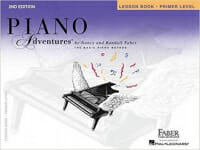
The 2nd Edition Primer Lesson Book introduces the keyboard, note values, and the grand staff. Students play in C 5-finger scale patterns, develop recognition of steps and skips, and learn letter names independent of finger number. Musicianship is built through the use of dynamics and coloristic experimentation with the pedal. The book is organized into units which represent the major concepts and skills. As new units are introduced, earlier concepts and skills are constantly reviewed.
Faber Piano Adventures

The 2nd Edition Level 1 Lesson Book introduces all the notes of the grand staff, elementary chord playing, and the concept of tonic and dominant notes. Students play in varied positions, reinforcing reading skills and recognizing intervals through the 5th. Musicianship is built with the introduction of legato and staccato touches. This level continues the interval orientation to reading across the full range of the Grand Staff. The 5-finger approach is presented here in a fresh, musically appealing way.
Belting - A

Written for ages 5 and 6, My First Piano Adventure captures the child’s playful spirit. Fun-filled songs, rhythm games and technique activities develop beginning keyboard skills.
The Brown Scale Book

This essential resource includes all major and minor scales, triads, arpeggios, dominant sevenths, and chromatic scales organized by key. A favorite for decades, The Brown Scale Book belongs in every student’s library.
